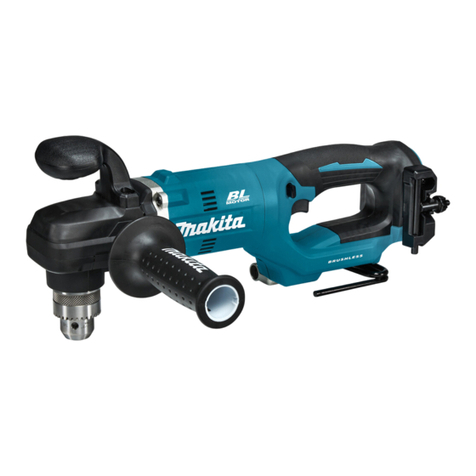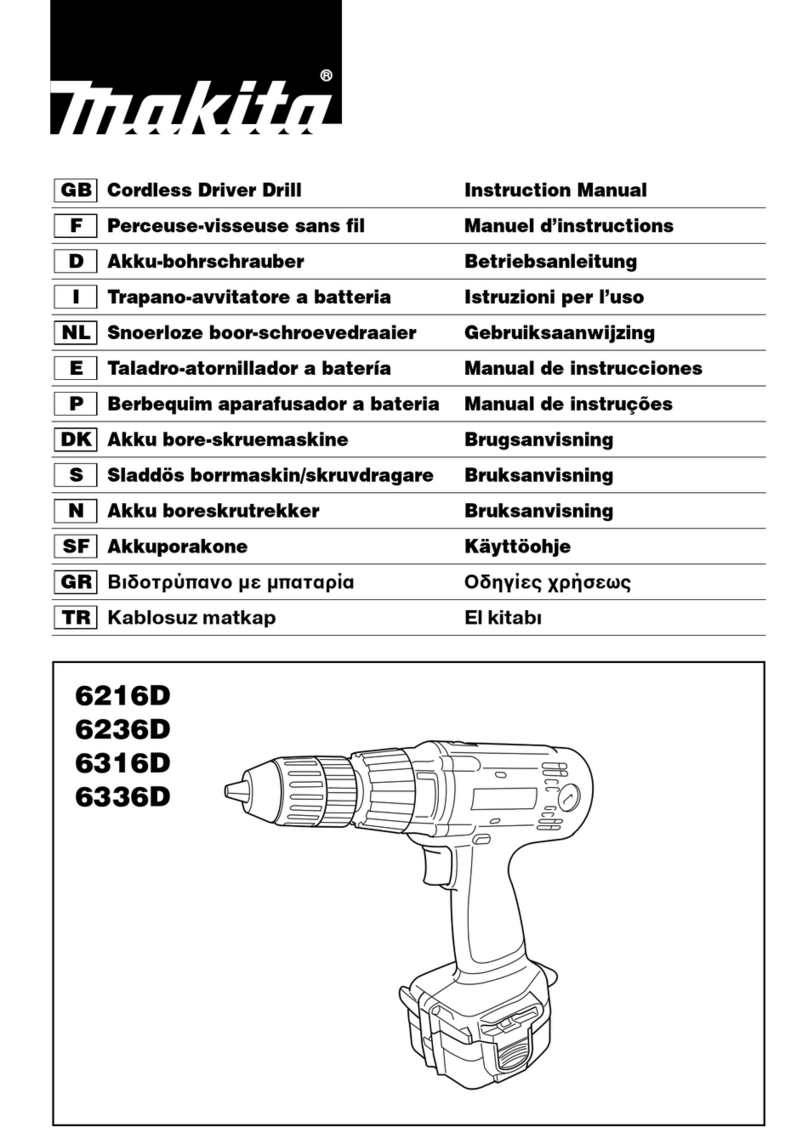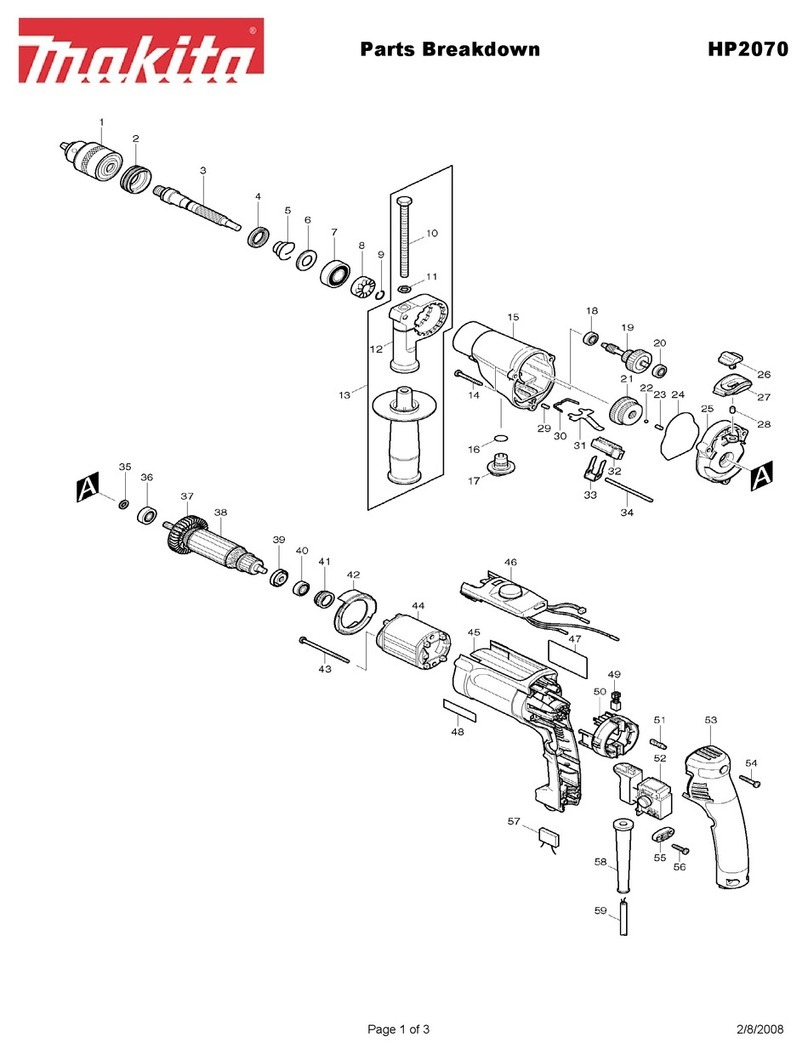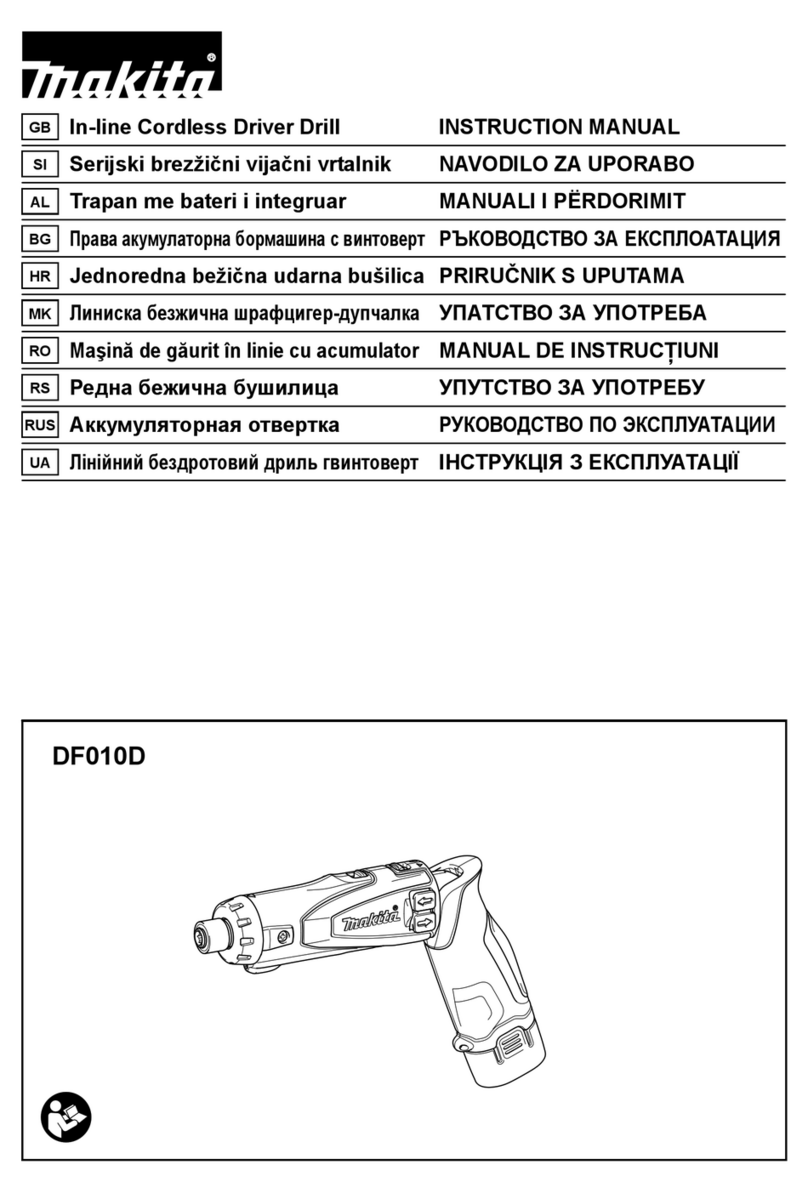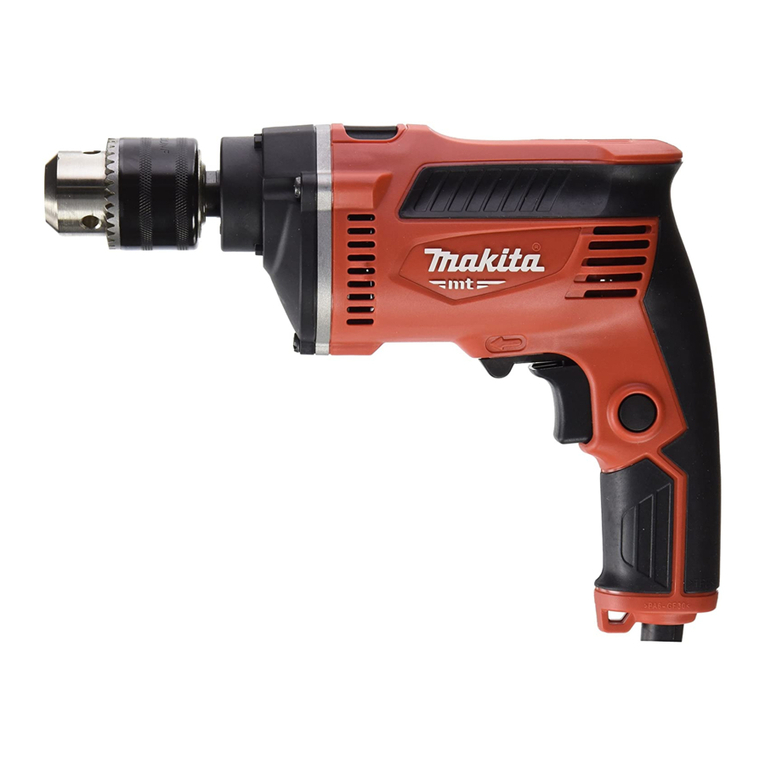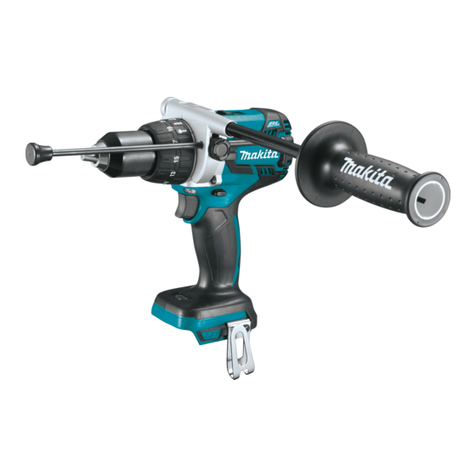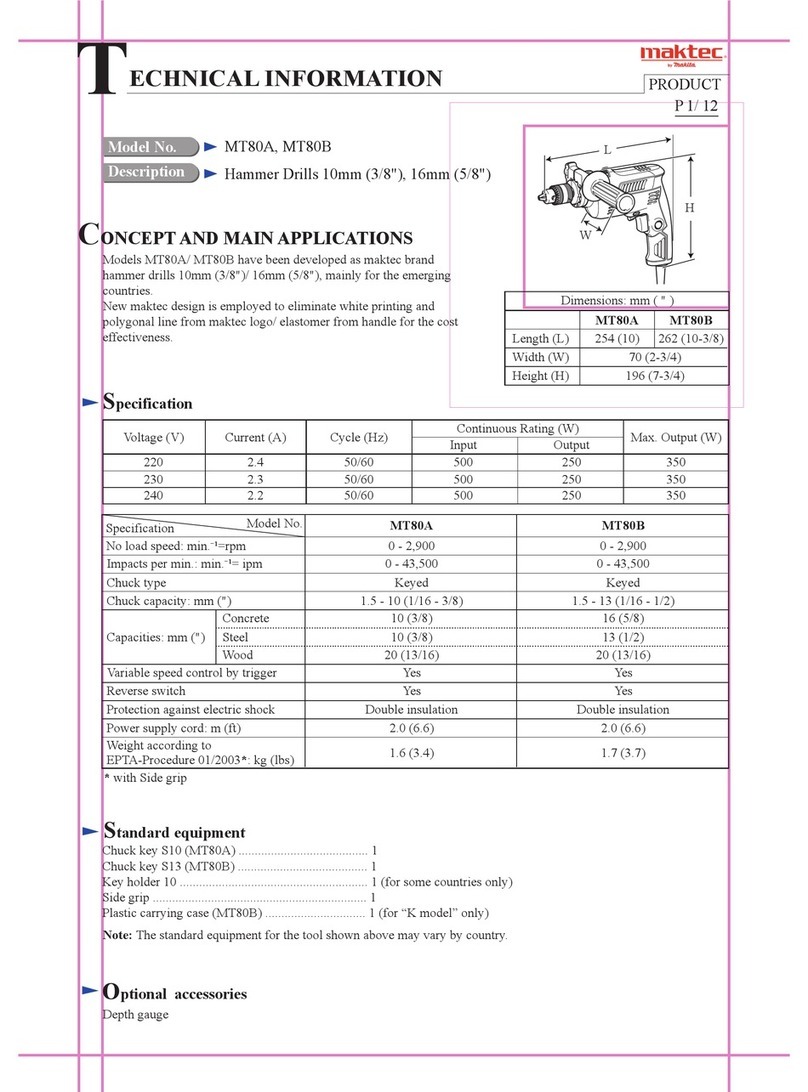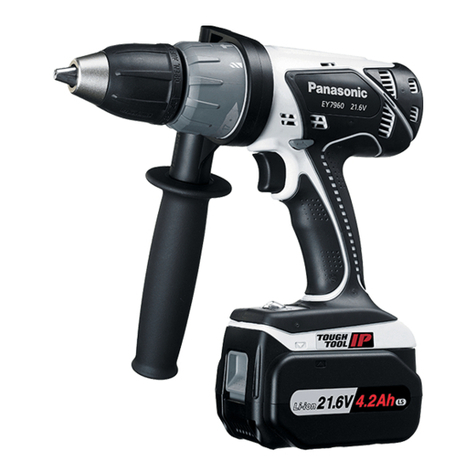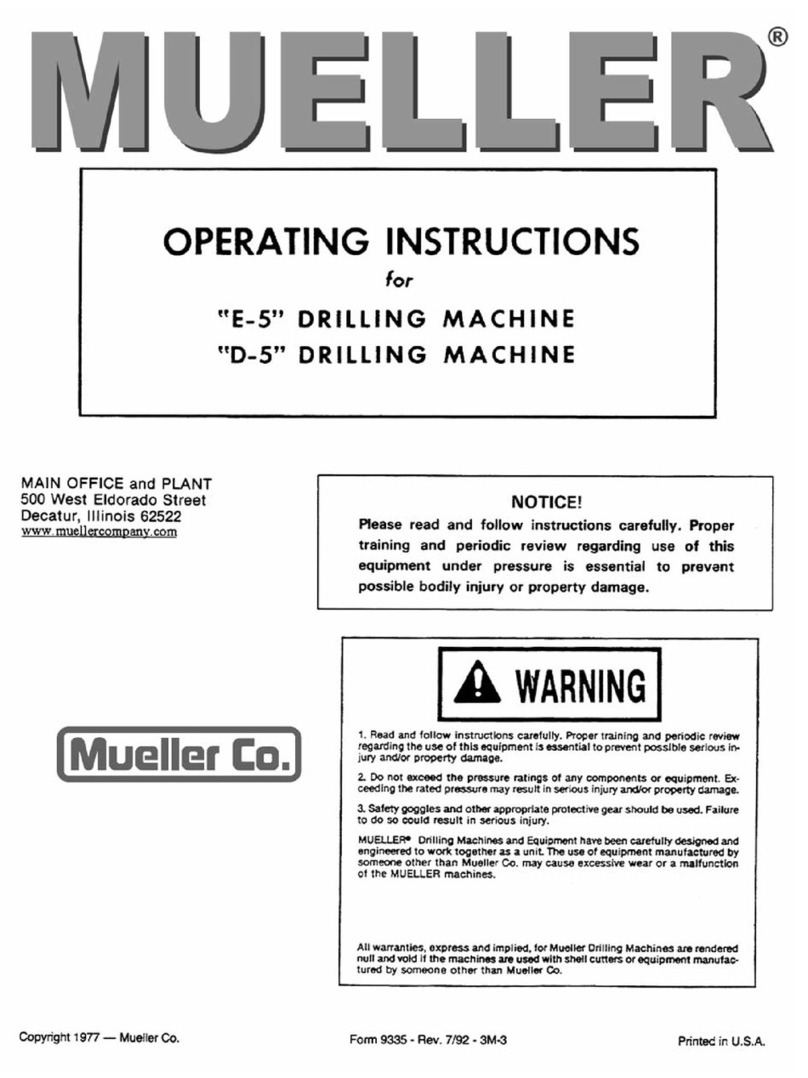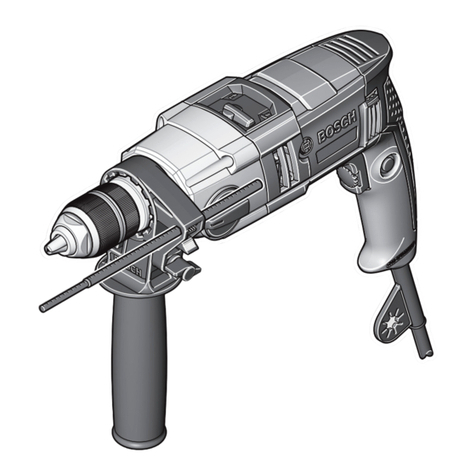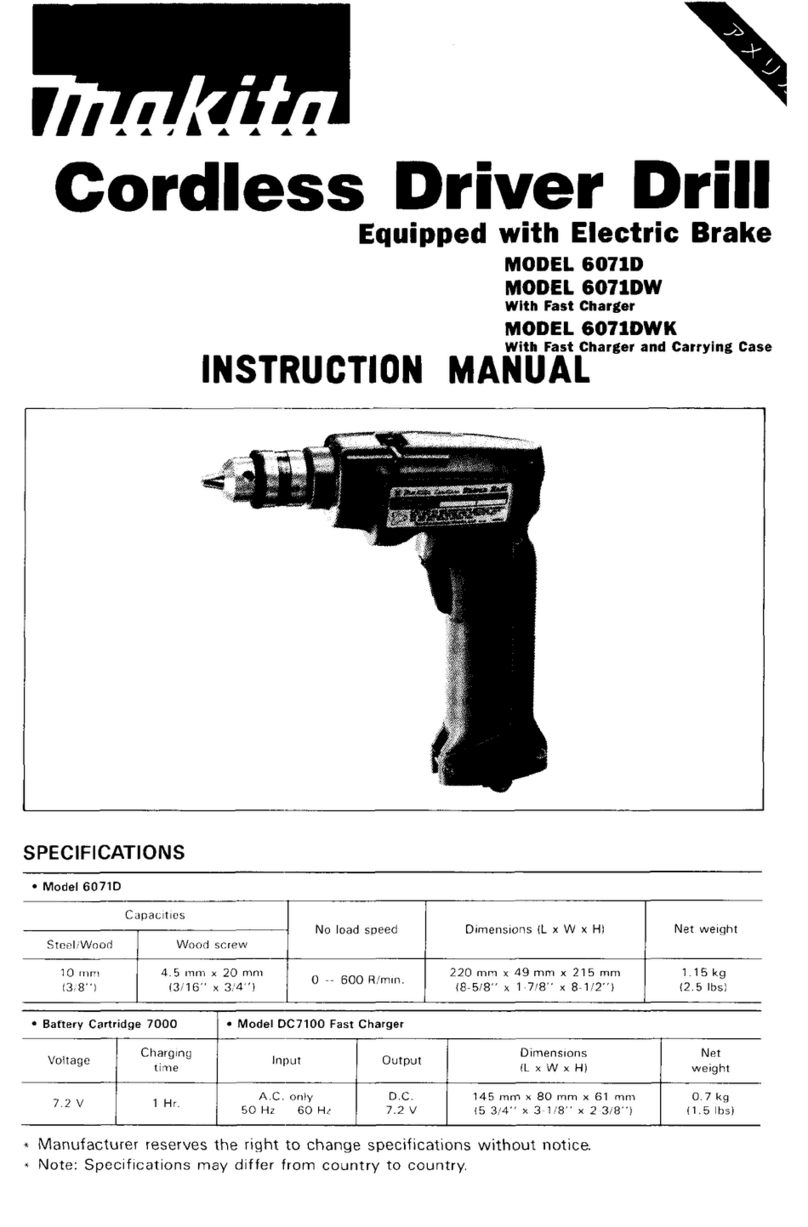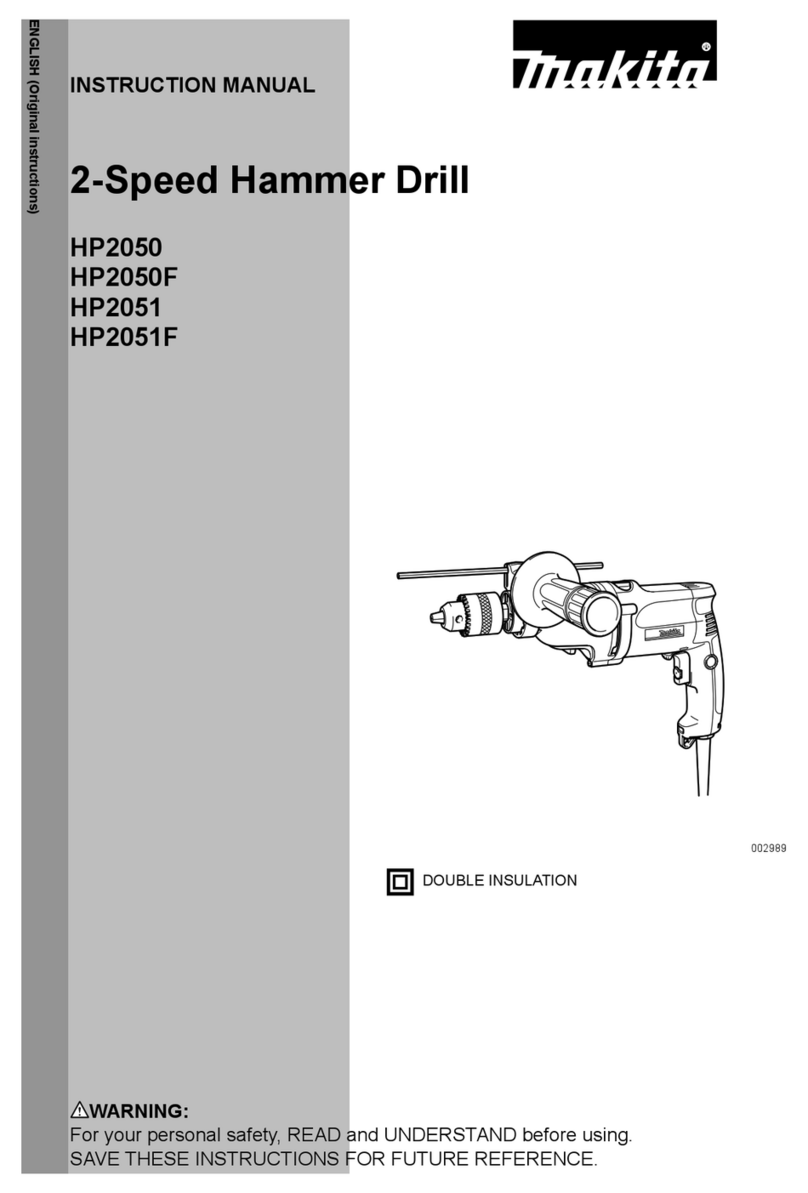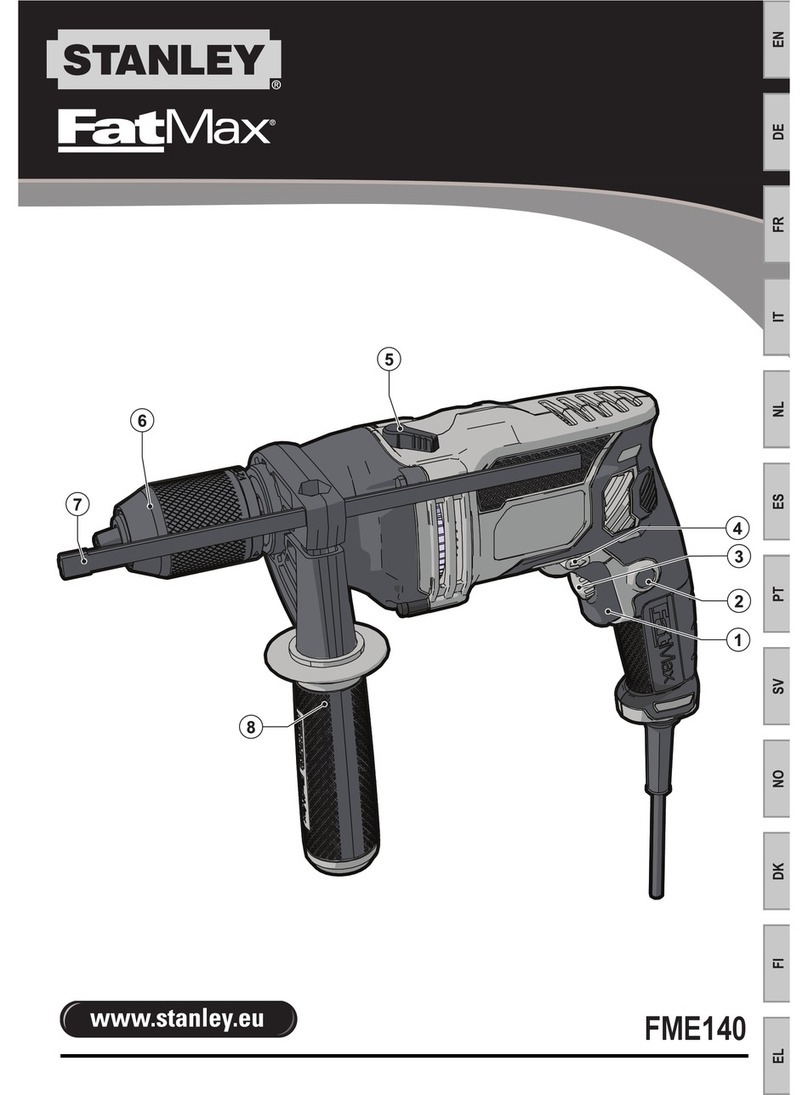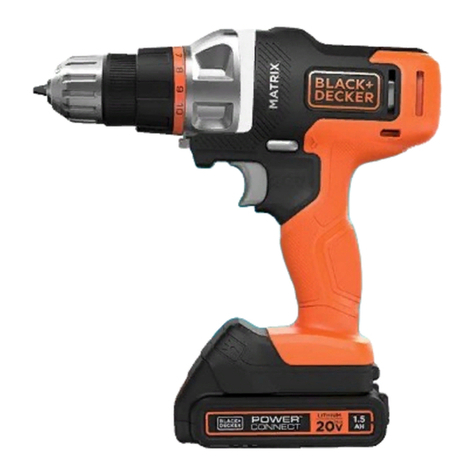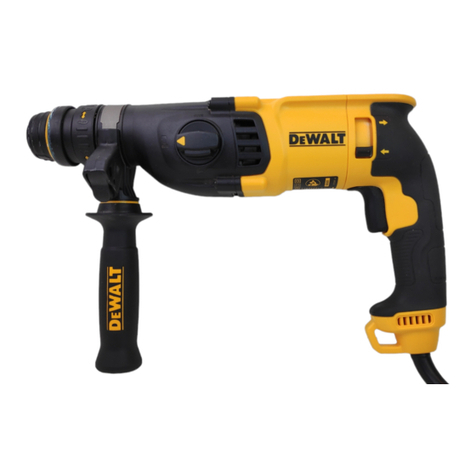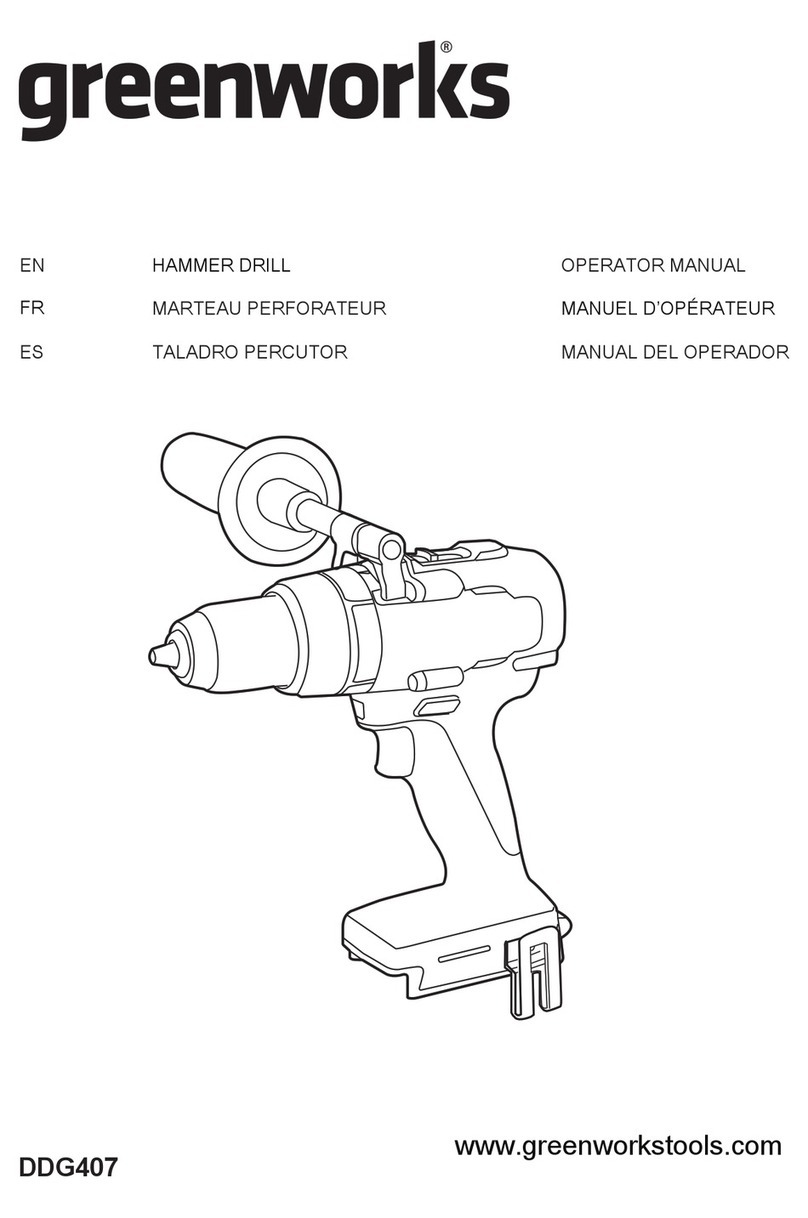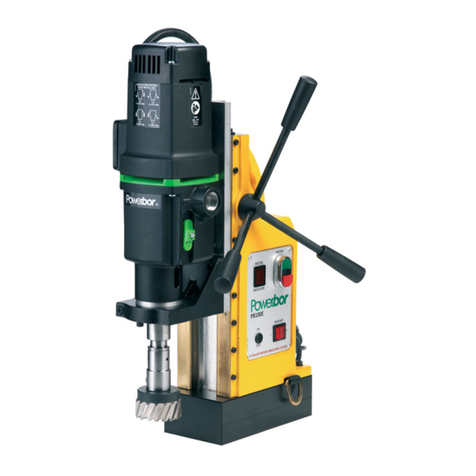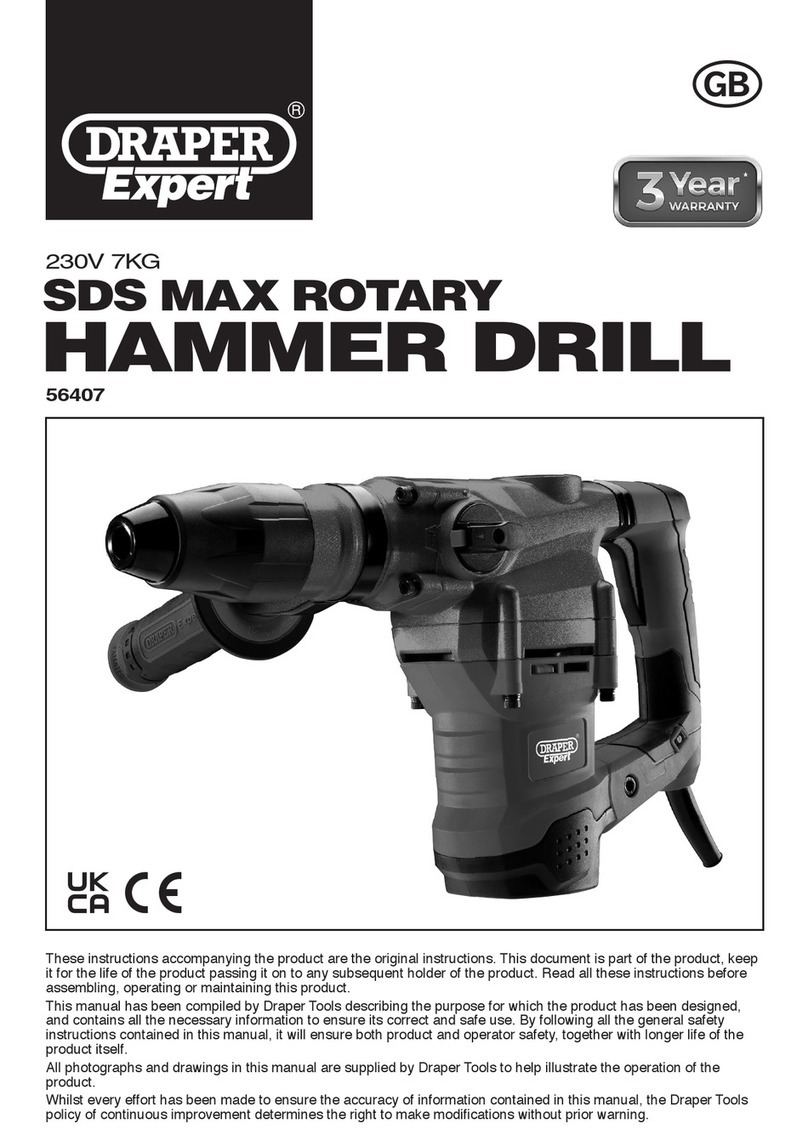
FUNCTIONALDESCRIPTION
Installing or removing battery cartridge
*Always switch off the tool before inser-
tion or removal of the battery cartridge.
*To remove the battery cartridge, with-
draw it from the tool while pressing the
buttons on both sides
of
the cartridge.
*To insert the battery cartridge, align the
tongue on the battery cartridge with the
groove in the housing and slip it into
place. Always insert it all the way until it
locks in place with
a
little click. If not, it
may accidentally fall out
of
the tool, causing injury to you or someone around you
Do not use force when inserting the battery cartridge.
If
the cartridge does not slide in
easily, it
is
not being insertedcorrectly.
Charging
*Your newbattery cartridge
is
not charged.
You will needto charge it before use. Use
the high capacity battery charger Model
DCI411 (for 8413D and 8433D)
/
DC1801
(for 8443D) to charge the battery car-
tridge.
Plugthe high capacity battery charger into
the proper
A.C.
voltage source. The
charging light will flash in green color.
*Insert the battery cartridge
so
that the
plus and minus terminals on the battery
cartridge are on the same sides as their respective markings on the high capacity battery
charger. Insertthe cartridge fully into the port
so
that it rests on the charger port floor.
When the battery cartridge is inserted, the charging light color will change from green to
redand charging will begin. The charging light will remain lit steadily during charging.
When the charging light color changes from red to green, the charging cycle
is
complete
and the charger will switch into its ”trickle charge (maintenance charge)” mode. The
charging time
is
approximately one hour.
After charging, unplug the charger from the power source
CAUTIO
N:
The high capacity battery charger Model DC1411
/
DC1801 isfor charging Makita battery
cartridge. Never use it for other purposes or for other manufacturer’sbatteries.
When you charge
a
new battery cartridge or
a
battery cartridge which has not been used
for a long period of time,
it
may not accept a full charge. This
is
a
normal condition and
does not indicate
a
problem. You can recharge the battery cartridge
fully
after discharging
it completely and recharging
a
couple of times.
a


